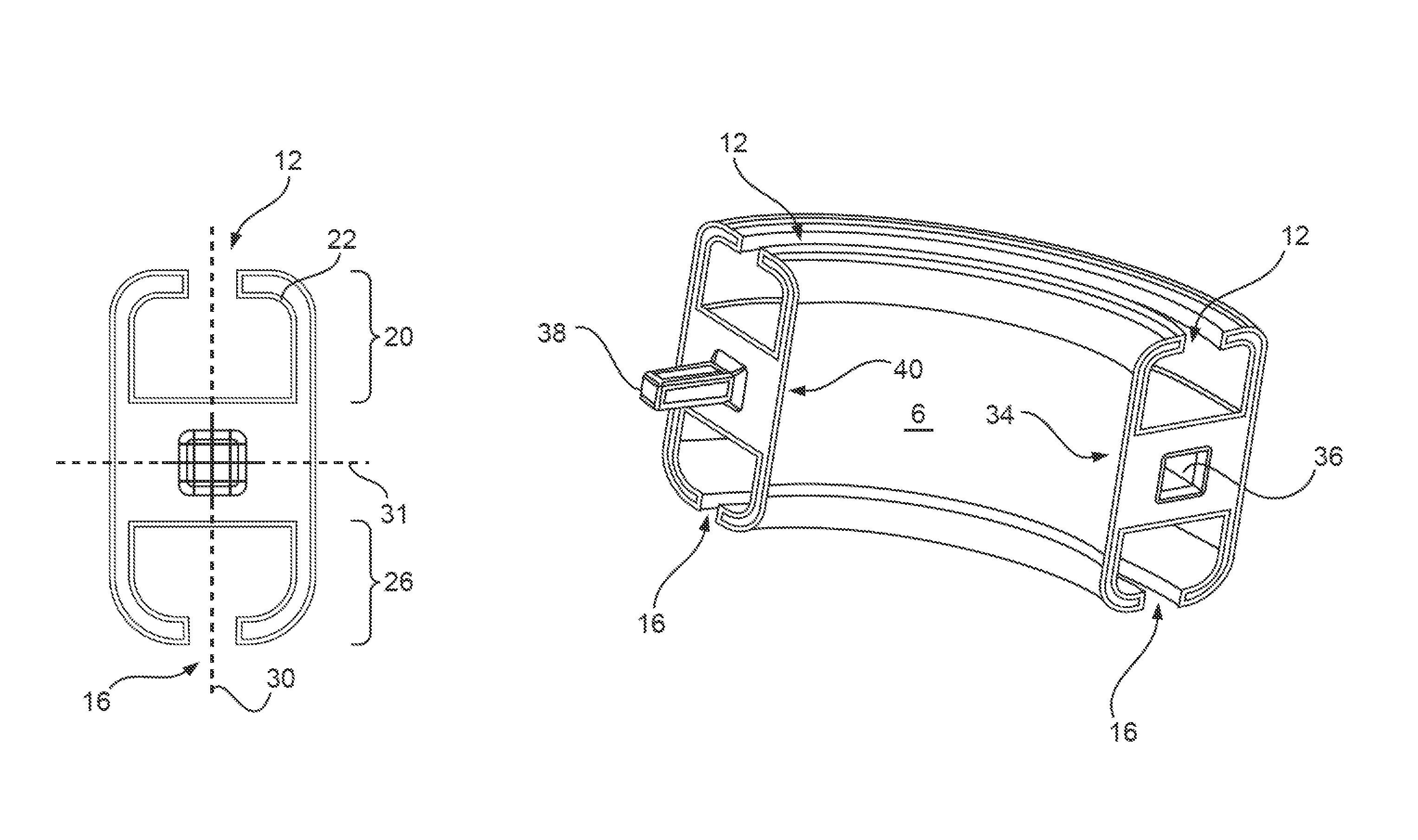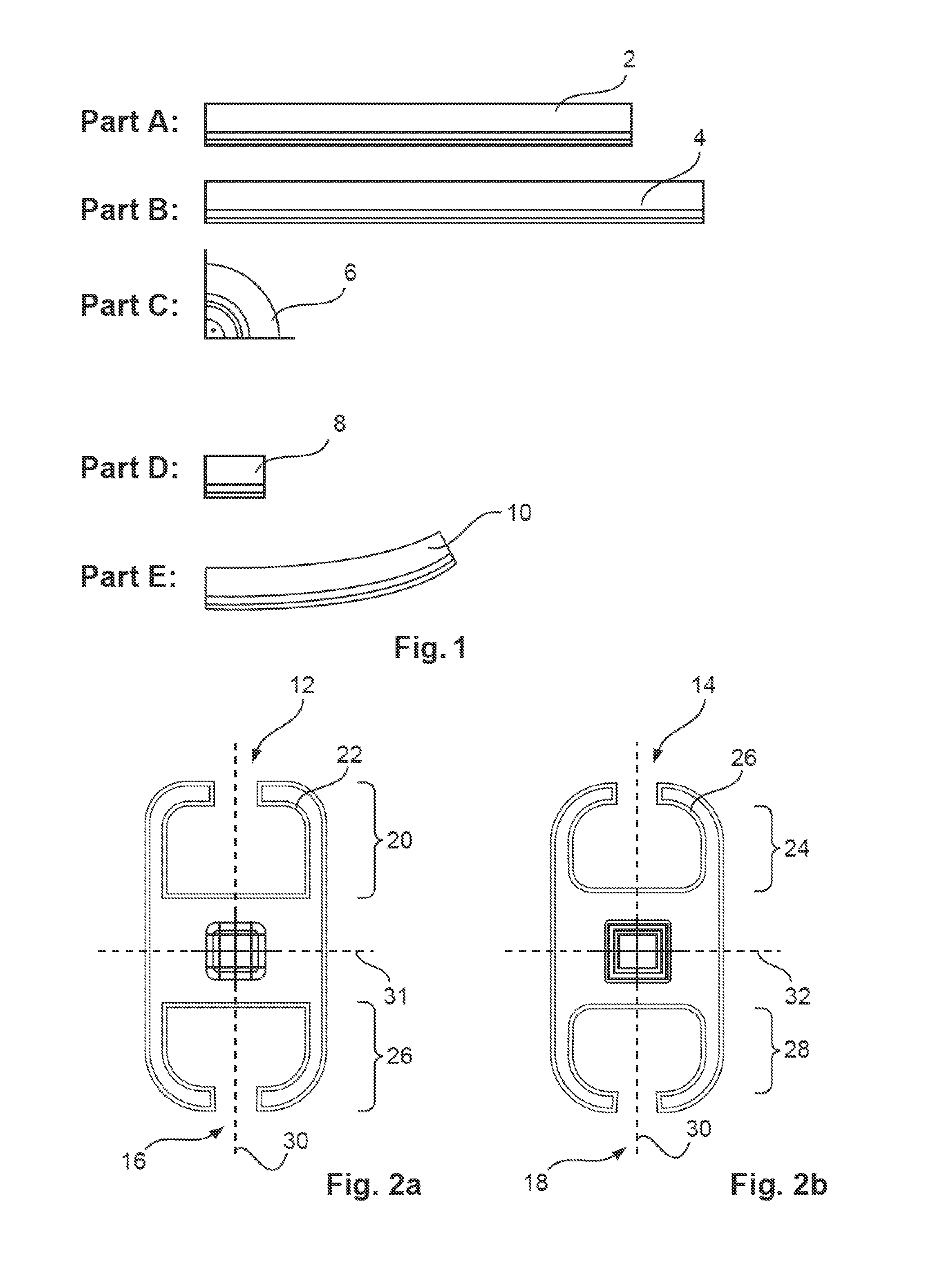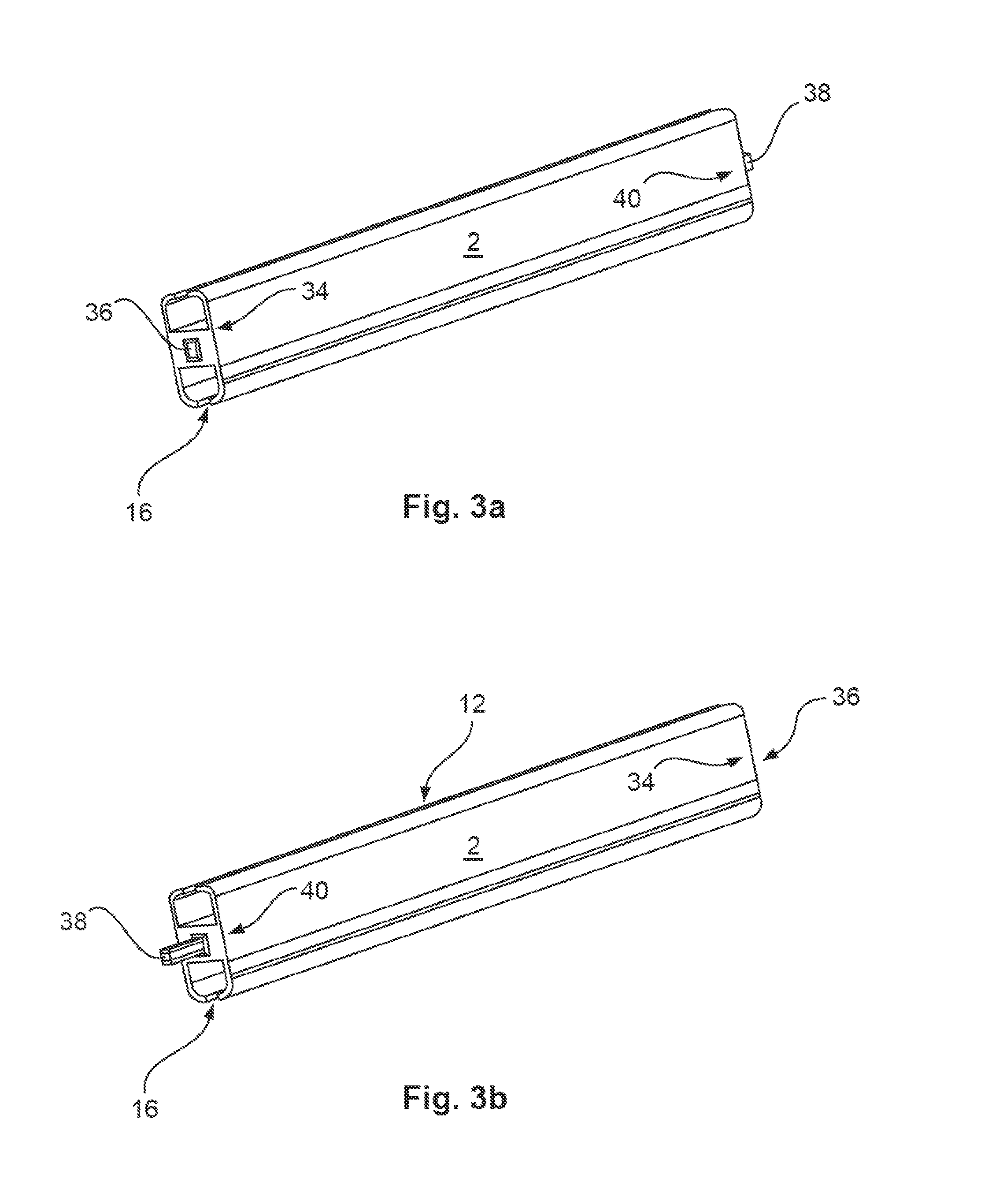Aircraft cabin curtain rail assembly kit, aircraft cabin curtain rail and aircraft with an aircraft cabin having a curtain supported on such an aircraft cabin curtain rail
a technology for aircraft cabins and aircraft, which is applied in the direction of wing accessories, wing suspension devices, manufacturing tools, etc., can solve the problems of complete re-design or modification of curtain rails, and achieve the effects of easy manufacturing, improved ability, and easy manufacturing in an industrial quantity
- Summary
- Abstract
- Description
- Claims
- Application Information
AI Technical Summary
Benefits of technology
Problems solved by technology
Method used
Image
Examples
Embodiment Construction
[0032]FIG. 1 shows an overview of a possible aircraft cabin curtain rail assembly kit. Exemplarily two linear or longitudinal curtain rail components 2 and 4 are named part “A” and part “B”. Part A exemplarily has a length of 50 cm; part B exemplarily has a length of 60 cm. These dimensions allow creating an aircraft cabin curtain rail with a most common lateral extension for providing a cabin zone separation for the most common commercial aircraft. The respective passageways over which the aircraft cabin curtain rail to be created spans, usually comprise a certain lateral extension for allowing a person to walk through. Often, besides lateral extension also longitudinal extensions are necessary as cabin components that define these passageways may be shifted relative to each other in a longitudinal direction. In order to provide necessary directional changes exemplarily a curved curtain rail component 6 is provided as a part “C” that has a radius of curvature of 10 cm and a curvatu...
PUM
 Login to View More
Login to View More Abstract
Description
Claims
Application Information
 Login to View More
Login to View More - R&D
- Intellectual Property
- Life Sciences
- Materials
- Tech Scout
- Unparalleled Data Quality
- Higher Quality Content
- 60% Fewer Hallucinations
Browse by: Latest US Patents, China's latest patents, Technical Efficacy Thesaurus, Application Domain, Technology Topic, Popular Technical Reports.
© 2025 PatSnap. All rights reserved.Legal|Privacy policy|Modern Slavery Act Transparency Statement|Sitemap|About US| Contact US: help@patsnap.com



